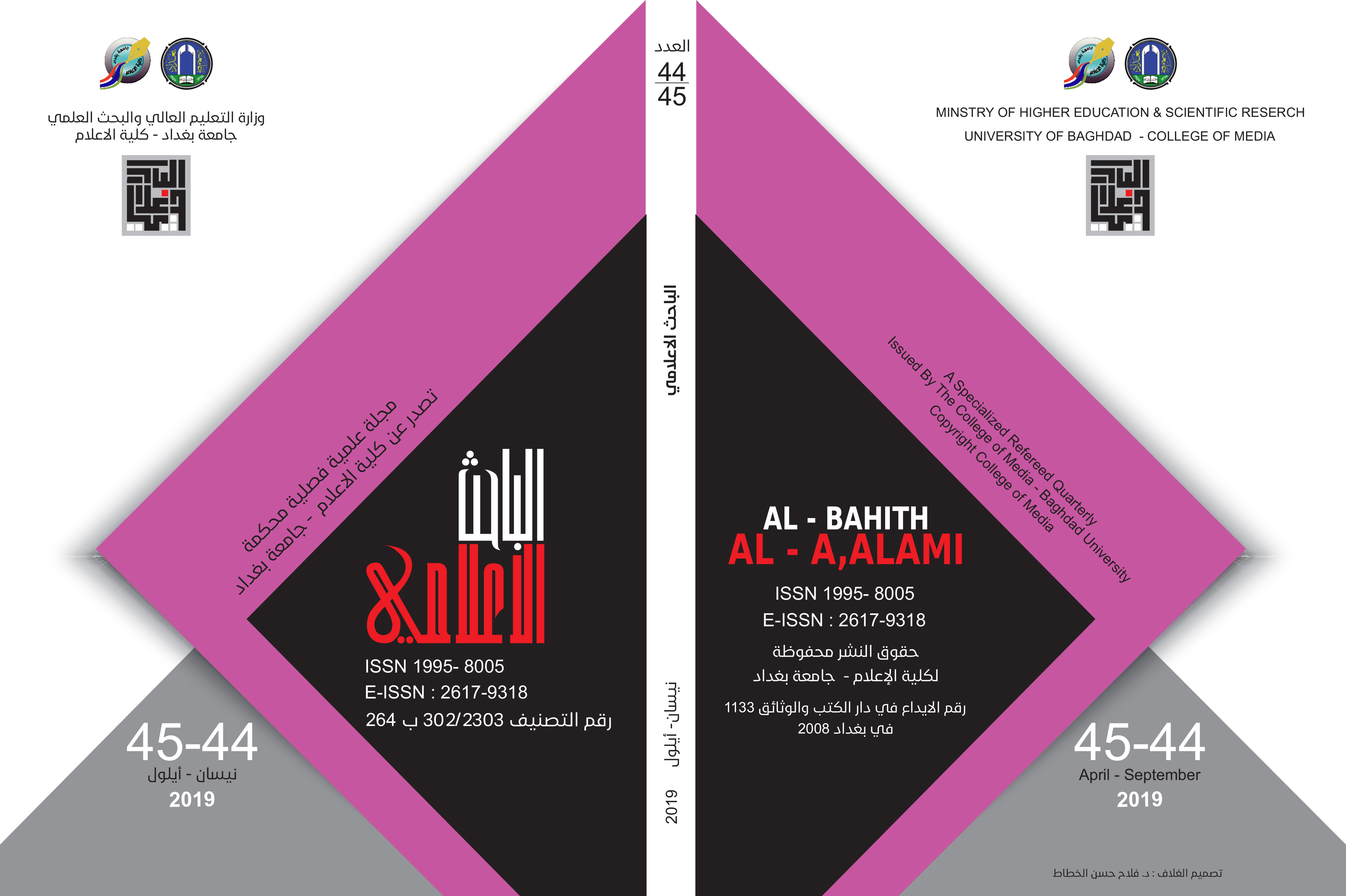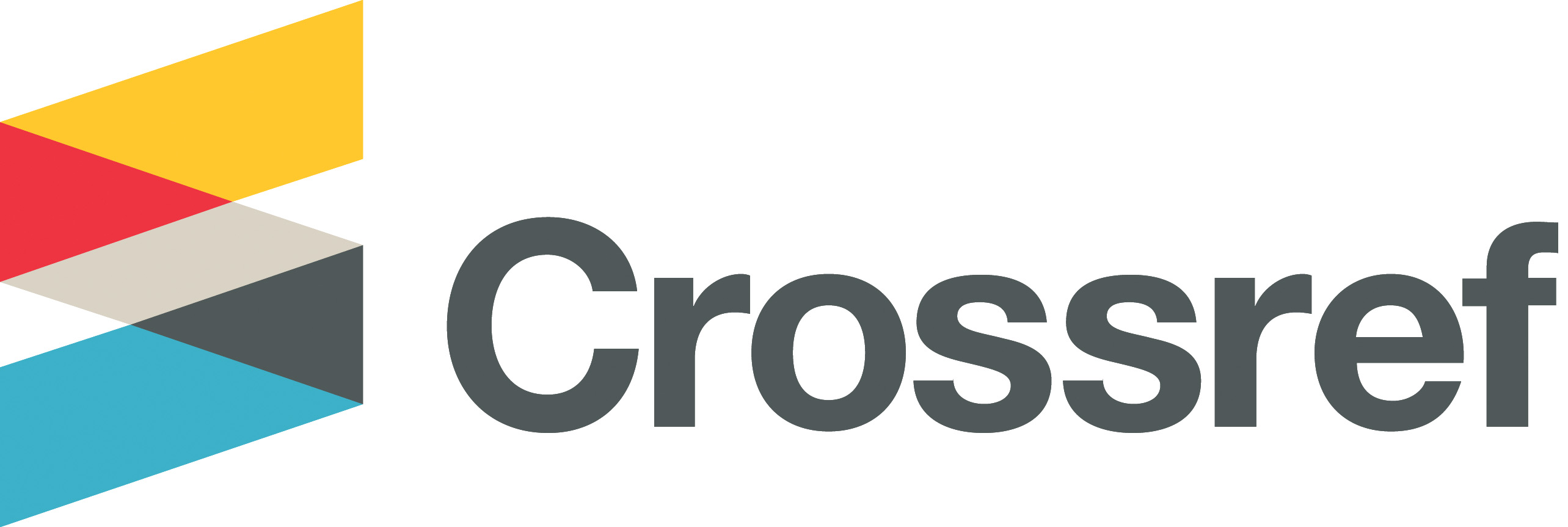Advertisement content in the Iraqi satellite channels and their commitment to advertisement ethics.
DOI:
https://doi.org/10.33282/abaa.v11i44.276Keywords:
ad content, Iraqi satellite channels, advertising ethicsAbstract
The problem of the study is to monitor the content presented in the Iraqi satellite channels to identify the nature of the ideas contained in these ads and to identify the values carried by the creative strategies and ad campaigns that use. Where the satellite is one of the most important technological developments in the field of communications in the nineties and the ads in various forms and functions one of the contents provided by satellite channels where these channels are keen to direct their messages in particular and communication, in general, to address a certain audience and convince and influence in order to achieve certain purposes of the source Or the body from which it originates, especially those that result in an increase in their material returns by relying somewhat on commercial advertising in support and financing of a particular channel. The study uses the methodology of the media survey. This study belongs to the field of descriptive studies, which aims to describe the situations, phenomena, and events and to collect accurate facts about them. Through an analytical study of the advertising content on the eastern channel of Iraq, the sample of the analytical study was withdrawn from 15/7/2018 to 15/10/2018 In order to identify the nature of the ad content submitted and analyzed 58 ads, the results of the study showed the diversity and diversity of ethical violations, the multiplicity, and diversity of negative values reflected by the ads on the Eastern channel has been hatred and hatred at the top of these negative values, The most widely used in the advertisements submitted to the Iraqi Sharqiya.
Downloads
References
Bishnoi , V. K., & Sharma, R. (2009). The Impact of TV Advertising on Buying Behaviour: A Comparative Study of Urban and Rural Teenagers . Journal of Management & Technology, 01(01), 65–76.
Burke, J. D. (1973). Advertising in the Marketplace. New York : Mcgraw-hill.
Chan, K., Ng, Y. L, & Williams, R. B. (2012, January 01). What do adolescent girls learn about gender roles from advertising images? Young Consumers, 13(4), 357-366.
Israa Issam Fath Allah, Cultural Westernization in Commercial Advertising in
Arab Satellite Channels: An Analytical Study, Unpublished Master Thesis, University of Ain Shams, College of Typical Education, 2016.
Iman Naji Abdeladim Saiid, The role of artistic construction of TV advertising in influencing youth purchasing decision: an applied study, unpublished master thesis, University of Alzakayk, College of Literature, p 8-9.
Hussein Dubai Alzouini, NBC Arabic TV programs: Analytical study of economic news programs, master thesis (unpublished), College of Media, University Of Baghdad, 2005, p81-82.
Hanan Hussein Hassan Naser, Influence of TV advertising on health habits of egyptian children, unpublished master thesis, University of Cairo, College of Media, 2012.
Sara Mahmood Abdelaziz Salam, Factors affecting the public response to medical advertising in arabic satellites: Analytical field study, unpublished master thesis, University of Halwan, College of literature, 2013.
Seh Rekeh wt wisi karim, Public Attitudes Towards Television Advertising in Kurdish Satellite Channels in the Kurdistan Region of Iraq: An Empirical Study, Unpublished Master Thesis, Mansoura University, Faculty of Arts 2016.
Safa Mohammed Ibrahim, The ethics of television advertising and its relationship to the upbringing of the Egyptian child, unpublished master thesis, Cairo University, College of Media, 2011.
Alaa Abdelkawi Aamer Mohammed, Human Models in TV Ads and their Social and Cultural Impacts on the Egyptian Public, Unpublished PhD Thesis, Cairo University, College of Media, 2014.
Hiba Nour Eldine Mohammed, TV advertising and its impact on the pattern of rural consumption, unpublished PhD thesis, Ain Shams University, Faculty of Agriculture 2016.
Ferial mehna, TV Advertising and Legislation in Current Societies, Journal of Media Research, Faculty of Media, Uniersity of Cairo, Issue 5, 1999, page 45.
Ahmed Adil Rashed, Advertising, Dar Alnahda Al Arabia for Printing and Publishing Beirut, 1981, page 93.
Thomas Al. Mcfile, International Media, Theories, Trends and Property, Translated by Dr. Hosni Mohamed Nasr, d. Abdullah Al-Kindi, University Book House, UAE, 2003, p. 257.
Rasim Mohammed Aljamal, Communication and Media in the Arab World, Center for Arab Unity Studies, Beirut, 2nd floor, 2001, p. 247.
Rasim Mohammed Aljamal, The role of commercial advertising in the promotion of products of Saudi industry, a field study, Riyadh, d.t, p. 248.
Rania Mamdooh Tariq, TV Advertising: Design and Production, 1st floor, Dar Osama for Publishing and Distribution, Amman, 2012.
Rajaa Alghamrawi, Television Advertising and the Culture of Consumption, 1st Floor, University Knowledge House, Alexandria, 2011.
Zaki Khalil Almosaid, Marketing in the Comprehensive Concept, 2nd edition, Amman, 1998, p. 371.
Salam Khetab Alnaseri, Media and American Foreign Policy: A Study in the American Media Penetration of the Arab World, House of Public Cultural Affairs, Baghdad, 2001, p. 189.
Abdelrazaq aldulimi, Advertising: In the 21st Century, 1st Floor, Al Yazouri Scientific Publishing & Distribution House, Amman, 2015.
Abdul Qadir bin Sheikh, d. Mohammed Hamdan, Arab audience and live television broadcasting via satellite channels, urban example, Union of Arab States Broadcasting, Tunis, 1998, pp. 12-17.
Howayda Mustafa, Advertising in Contemporary Broadcasting Systems, Egyptian Lebanese House, Cairo, 1999, p. 216.
Chan, K., Ng, Y., & Williams, R. (2012). What do adolescent girls learn about gender roles from advertising images?. Young Consumers, 13 (4).
Mcgraw-Hill, Advertising in the Marketplace, New York, 1973, P. 7
Vinod Kumar Bishnoi and Ruchi Sharma, The Impact of TV Advertising on Buying Behaviour: A Comparative Study of Urban and Rural Teenagers, Journal of Management & Technology, Volume 1, Number 1 (2009), pp. 65–76
Downloads
Issue
Section
License
Copyright (c) 2019 outhor

This work is licensed under a Creative Commons Attribution 4.0 International License.
Authors retain copyright and grant the journal right of first publication with the work simultaneously licensed under a Creative Commons Attribution License (CC BY 4.0) that allows sharing the work with recognition of authorship and initial publication in ABBA journal.


















